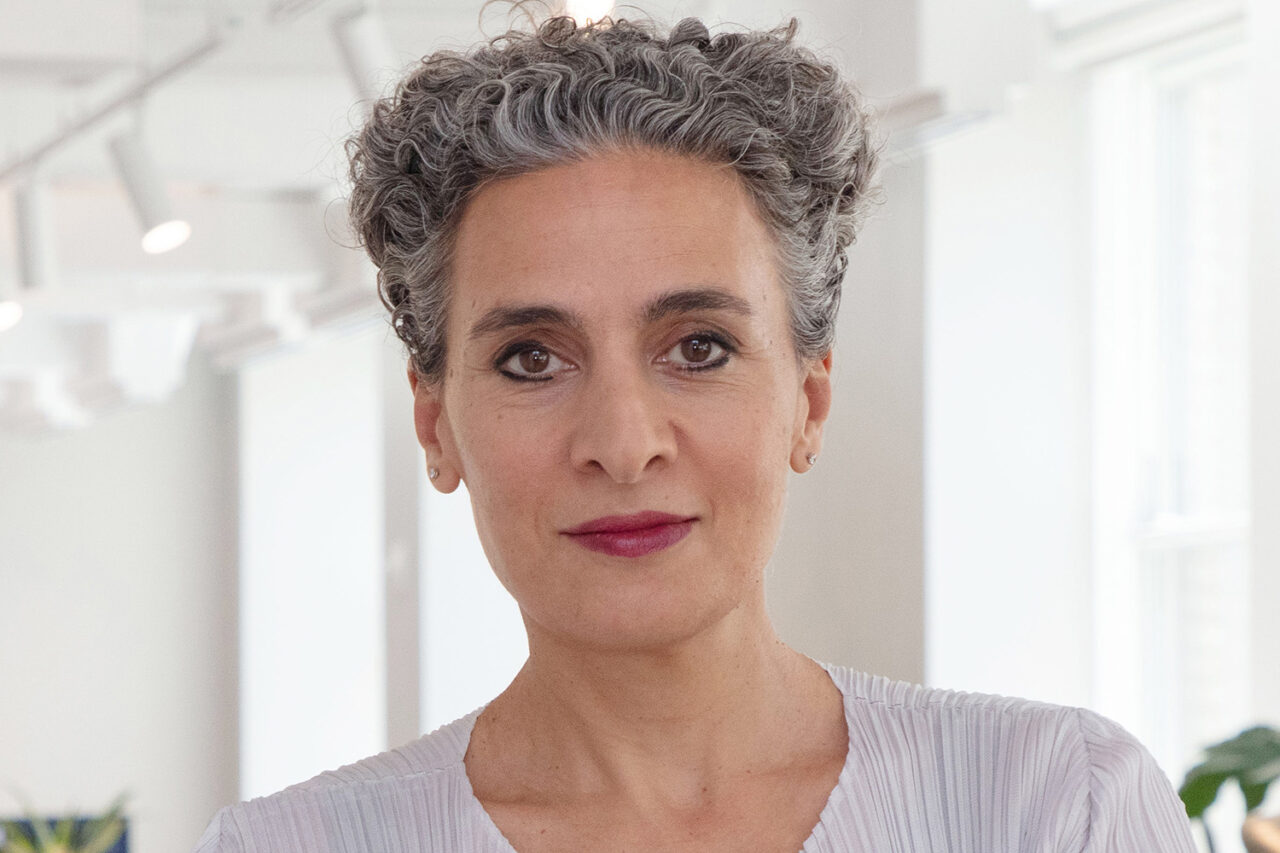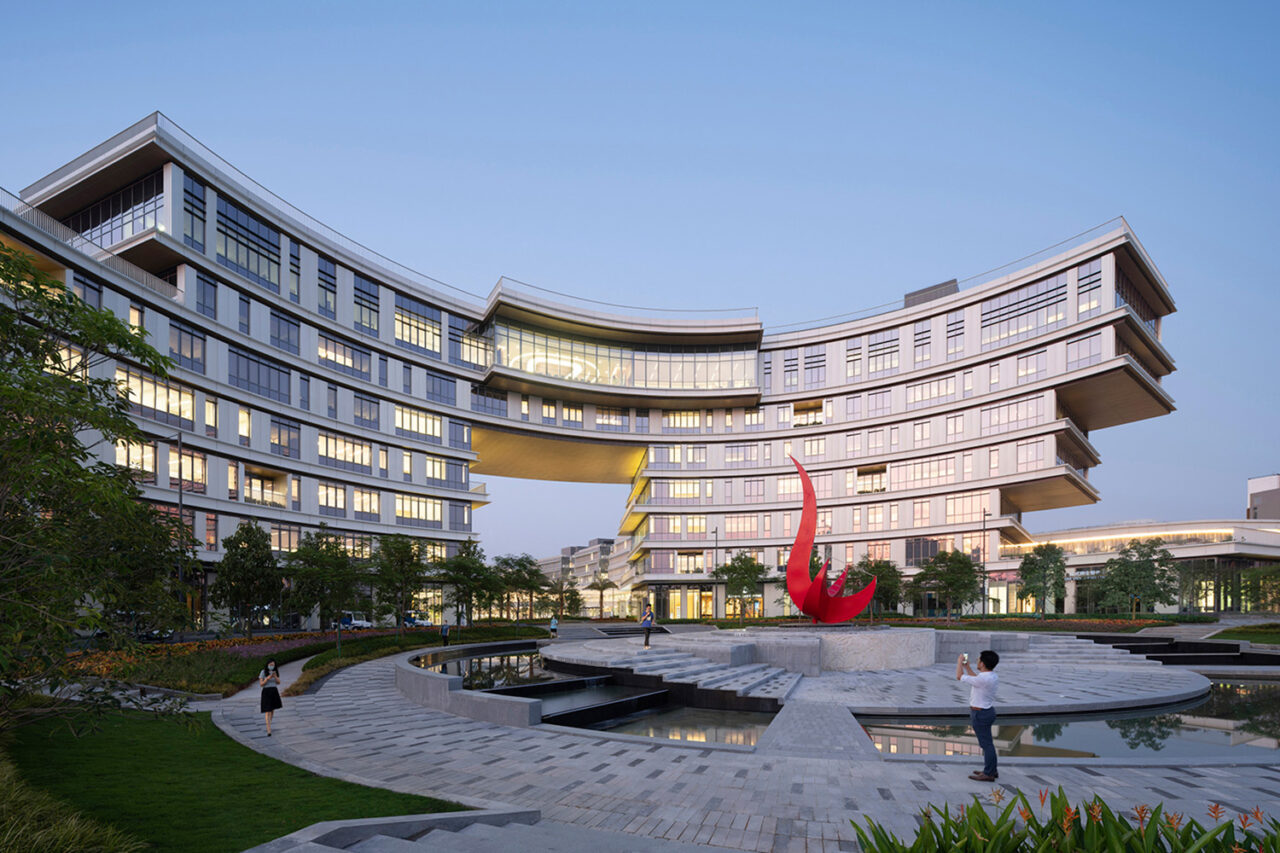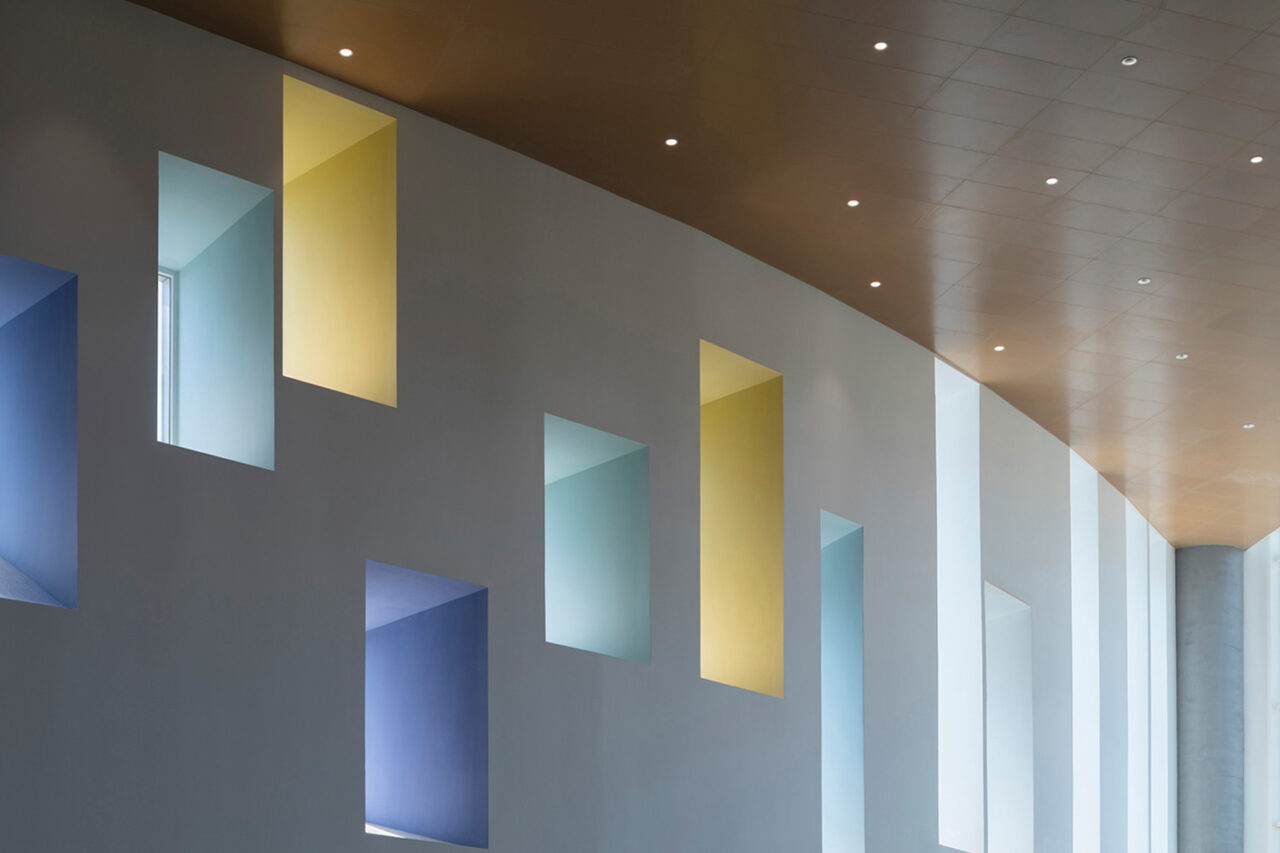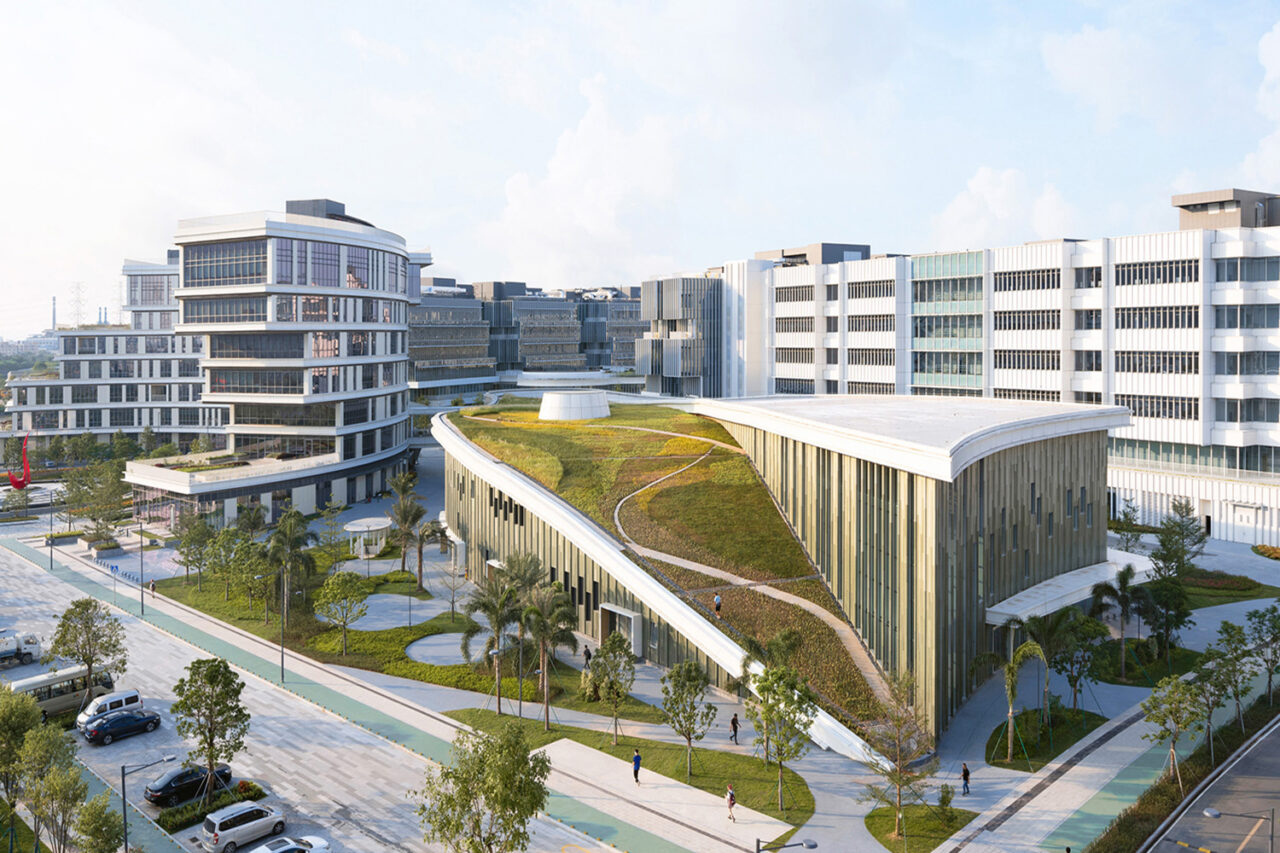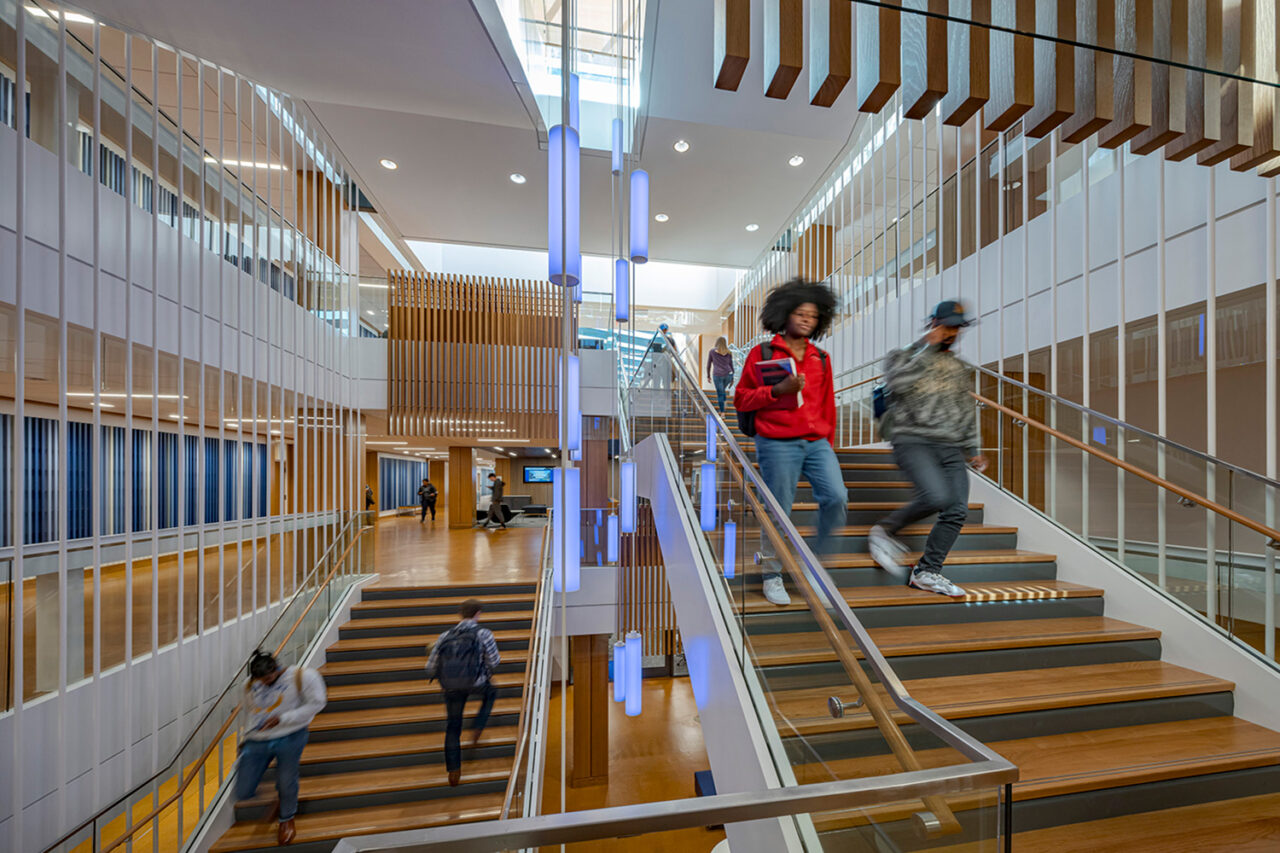by: AIA New York
Hana Kassem, FAIA, NOMA, LEED, WELL AP, Principal at Kohn Pedersen Fox Associates, has championed a human-centric design approach to architecture throughout her near 30-year international career. Her architecture uplifts the human experience, uniting inclusivity and sustainability, to inspire common bonds. She skillfully modulates form, color, and materials to foster a profound sense of belonging to place, community, and nature. She is a pioneer in adaptive reuse projects, such as the Meta Offices at Farley, as well as the design of innovative academic, science and research facilities as exemplified by the University of Michigan Center for Innovation, the all-electric Biomedical Research Building for Columbia, and HKUST’s University Academic Center. She serves on the AIANY Board of Trustees as VP for Design Excellence and the Van Alen Institute Board of Trustees. Her influence extends to speaking engagements around the world, and teaching appointments at Parsons and Yale.
This year, the Jury of Fellows of the AIA elevated Kassem to its prestigious College of Fellows in the first category of Fellowship, which recognizes architects who have made efforts “To promote the aesthetic, scientific, and practical efficiency of the profession,” according to the organization’s definition. Only three percent of the AIA’s membership is distinguished with Fellowship. Kassem’s distinction will be celebrated at the AIA Conference on Architecture from June 5–8 in Washington, DC, and was also recognized at AIA New York’s Center for Architecture during the 2024 New Fellows Celebration.
Q: What has been particularly challenging in your recent work?
As an architect that has worked across the world in very diverse cities and contexts, the question of the universal and the culturally specific effect of environments on people has been and continues to be a central challenge in my work. How can we create places that resonate, both culturally and physically, with a community and with nature, across cultures and geographies?
The question is related to the circular notion of our impact on environments and in turn, the impact of those environments on us. The challenge has to do with creating an architecture that responds to this multi-dimensional sense of belonging, in both material and cultural sustainability.
Q: How/why did you decide to pursue architecture?
I went to RISD to pursue a fine arts degree in sculpture with the idea of eventually becoming an installation artist. I had always been interested in multi-sensorial and experiential qualities of spaces, and their effect on people. After the Freshman foundation year, my father urged me to give architecture a try for ten days, after which I would be free to decide what to pursue. I chose to stay in architecture when I realized how all-encompassing it could be, and how it could include all areas of interest to me at once: art, making, material investigations, behavioral psychology, cultural anthropology, neuroscience, sociology, environmental and natural systems, and cultural narratives. Through the practice of architecture, I felt that I could make a real difference in improving the lives of people, communities, and cities. Interestingly, going full circle, I’ve recently had some commissions for public art installations which I very much enjoy working on.
Q: What are some of your favorite recent projects that you’ve worked on?
My favorite projects are always the ones still underway, but I would like to mention some of my favorite recently completed ones: the HKUST University Academic Center (UAC) in Guangzhou, China and the Meta Offices at the Farley Post Office in New York City. Two projects in radically different contexts and for very different stakeholders; but both centered around the notion of belonging and both for transient user groups. The UAC, was designed as a ‘third place’, a student commons for rest and relaxation. The Meta workplace was envisioned as a small city within the historic building which included spaces for work but also spaces for socializing and community-building, as well as individual restoration.
Q: What do you see as an architect’s role—and responsibility—within our culture?
The architect’s role is very multifaceted. I have, as a matter of fact, co-edited a book (Architect d.b.a.: On Redefining the Roles of the Architect Today, 2017, published by the AIANY) that is a compilation of essays by various architects and educators on this very subject. Regardless of the avenue one chooses, the responsibility of an architect, I believe, is to orchestrate the built environment so as to improve people’s daily experiences and foster, through good design, positive social, economic, psychological and physical outcomes. Our skills as architects give us the privilege to be able to elevate people’s experience of life. It is a privilege that needs to be handled with care and used judiciously towards building inclusive environments and places people feel a sense of connection to.
Q: What do you think are the biggest challenges, or opportunities, facing cities today?
Cities today, across the world, are suffering a loss of vitality. This stems, in my opinion, from earlier over reliance on commercial anchors to generate activity, which the pandemic drove to failure. These vacancies at street retail storefronts compounded by commercial office space vacancies due to the work-from-home policies, drained the lifeblood of cities, producing empty streets, alienation, and lack of connection to place.
This void also creates a set of opportunities that could entail the diversification of the elements that define a city center towards less commercial and more socially and culturally driven ones. I am thinking about vacant storefronts that could be rethought as cultural spaces for the production or performance of art, or perhaps as community makerspaces. Uses that would bring back the vitality of city streets and at the same time create a more economically and culturally diverse city center, enabling communities to participate and have agency within the activity of the city, and a sense of investment as participatory citizens.
Editors’ Note: This feature is part of a series celebrating the members of the American Institute of Architects (AIA) New York Chapter who are elevated each year to the AIA College of Fellows, an honor awarded to members who have made significant contributions to both the profession and society. Learn more about Fellowship here.








